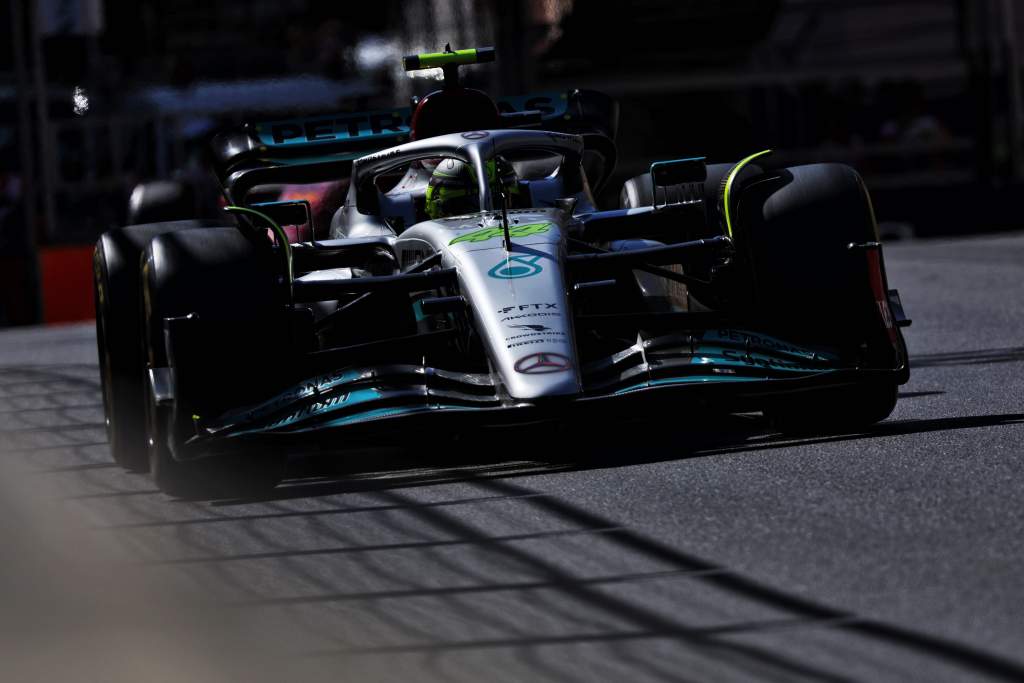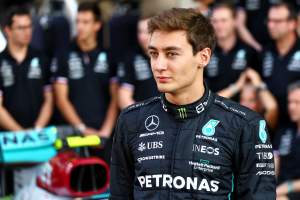Up Next

The 2022 Formula 1 season was a voyage of discovery for Mercedes. It was first one of realising it had problems, then recognising they would not be easily solved and then gradually building an understanding of the porpoising and bouncing problems that wiped out any hope of it being a championship threat.
The journey ended, more or less, with the morale boost of victory in the Brazilian Grand Prix at Interlagos one round from the end. But for the end of the journey to actually be considered a success depends on whether next season’s W14, the culmination of the pain and learning of ’22, gets Mercedes back to the front on a regular basis.
Back at the start of the year, Mercedes first had to establish whether it had a genuine problem. The first time the car hit the track, on a windswept promotional day at Silverstone on February 18, the bouncing was obvious. But given this was what George Russell described as “the windiest day in my whole motorsport career”, was it simply a function of extremely bad conditions?
“We knew from a very wet day at Silverstone that there was some amount of bouncing, but not enough to get a really clear picture,” Mercedes technical director Mike Elliott told The Race. “That day was pretty horrific, to say the least, with gale-force winds and heavy rain, so we went to the first test and were able to prove it was definitely there.
“We knew we had issues to solve but we obviously also knew we had a pretty big update to come, and it’s hard to know what you do on the first kit versus what you do on the second kit, etc. So that was part of the challenge.”
Mercedes grabbed the headlines when its ‘zero sidepod’ package broke cover on the first day of the final pre-season test in Bahrain. The package didn’t eliminate the problems, but Mercedes stresses it didn’t cause them either. Despite the fact the narrow sidepods received enormous scrutiny, the team doesn’t believe they were at the heart of the poor performance.
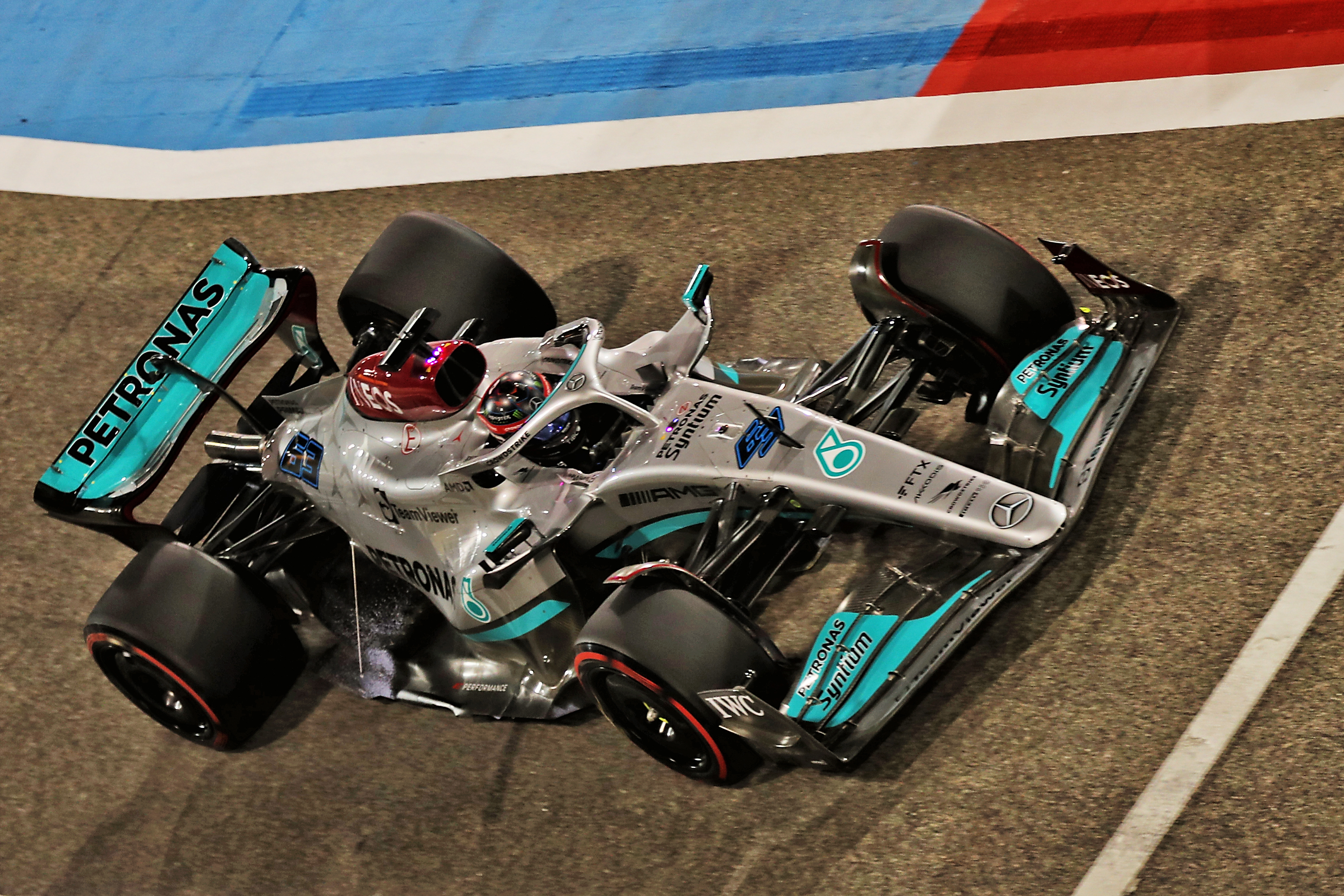
“It didn’t create anything unexpected,” said Elliott. “Unfortunately, it didn’t fix our problems, it was never intended to.
“When people look at the car there’s this tendency to talk about concepts of cars in that you have a concept, you put it on the track and it works or it doesn’t work.
“I think the reality of what we do is a constant evolution, it’s to take what you’ve got and say, ‘well how can we make it better?’ And you do that by looking at competitors’ cars, you do by looking at your own simulations, your trackside measurements, your windtunnel measurements, your CFD measurements and say ‘what’s the next step to make?’
“And although the sidepod is visually quite different to what others are running, when you look at what it does aerodynamically, it’s not so different to what others are running. It’s just a different geometry.
“The reality is that if you were to swap sidepod concept, I don’t think it makes a very big difference to where we’re at.”
Even after testing, Mercedes was confident that it would get on top of its problems relatively quickly. There was talk of vast lap time gains to be had once it could get the car operating dependably at the low ride-heights required to do so. But that proved impossible.
Elliott references the fact there was a multitude of problems Mercedes was battling through early in the season. But at heart, it all boiled down to where the car was conceived to run ride-height-wise. That’s because even when Mercedes had got on top of the worst of the porpoising thanks to changes made for the sixth event of the season in Spain, the package was fundamentally compromised.
“I don’t think any of the teams really predicted the porpoising,” says Elliott. “We were all aware of what had happened in the past with ground effect cars and we’d all gone into the season thinking there was the potential for that.
“When you look at the limitations you’ve got in terms of what you can do in CFD and the windtunnel, due to the aero testing restrictions, it’s pretty difficult to get a handle on what you might or might not see.
“So once you got into the winter testing properly and saw the bouncing, for us in particular, it was really a case of how quickly can we develop the tools to understand exactly what’s going on.
“You could do various fixes trackside and experiments and we saw a lot of those up and down the grid. But really it was about how quickly can you understand what the underlying phenomenon is and how quickly could you fix it?
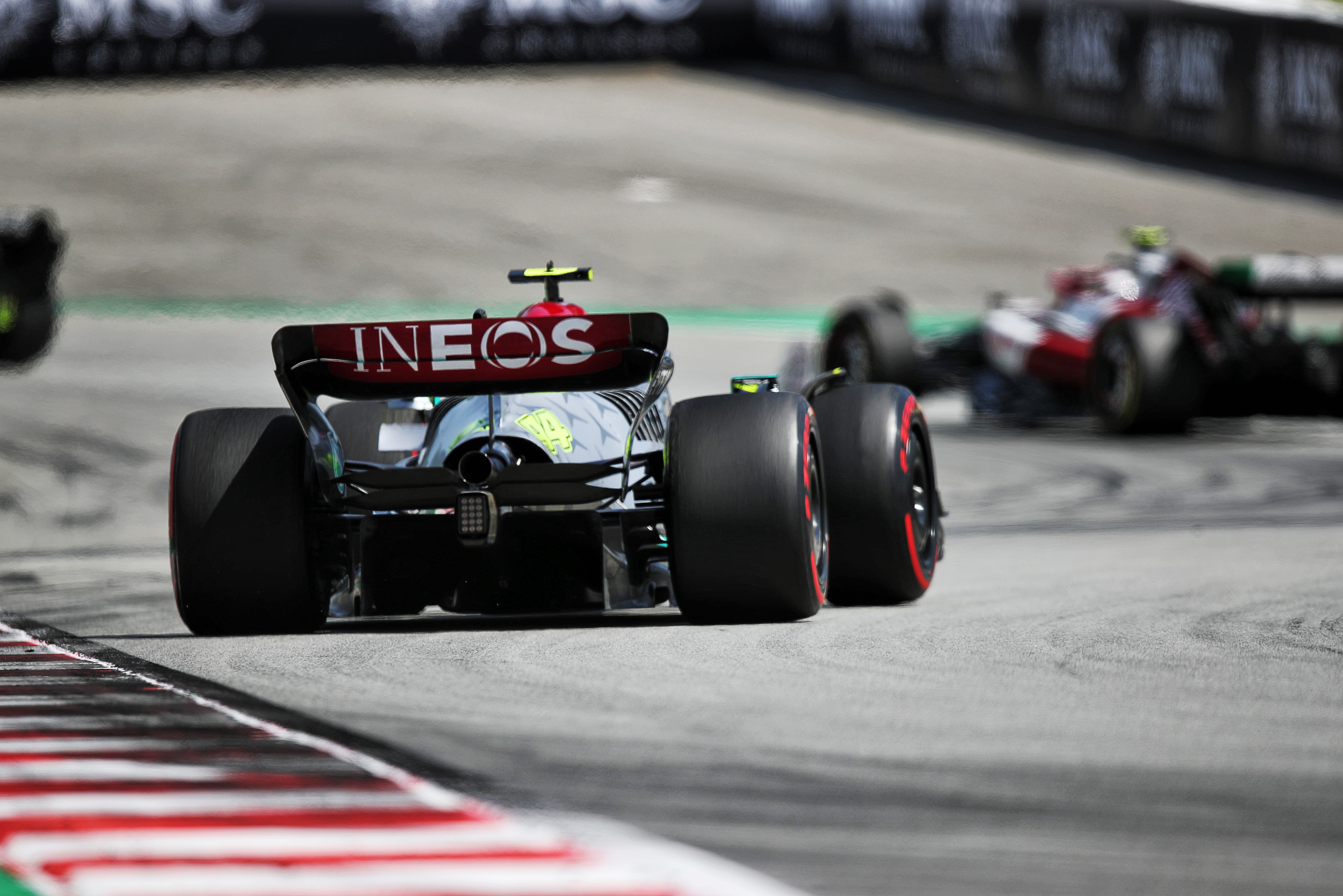
“By Barcelona, we were pretty much on top of that. But that introduced certain constraints to the way we were running the car, which meant we weren’t able to get the best out of it.”
While the porpoising phenomenon never completely vanished, it was at least contained and largely understood by this point in the season. But the fact the W13 was conceived to run at a low ride height meant it didn’t have the rear suspension range it needed once adjusted to run higher. That was something that made Monaco a nightmare weekend.
The car generally had to run stiff – meaning mechanical bouncing (as opposed to porpoising) was also a problem and the floor wasn’t able to generate the intended downforce. That meant a tendency towards bigger wings, which led to another weakness of the car in terms of drag. These were all different manifestations of the same fundamental problem and, to a greater or lesser extent, Mercedes carried them all year. How problematic they were was defined by circuit characteristics.
“It was a case of picking how close to the ground could you actually get away with running them,” says Elliott of the challenge of the 2022 cars. “So you’ve got two issues there.
“The aerodynamic issue is there’s effectively a phasing between the aerodynamic force and the motion of the car. And the phasing between the two means that you get an energy input. So once you hit a bump and you initiate an oscillation, the aerodynamics are such that they add energy to the oscillation rather than damp it.
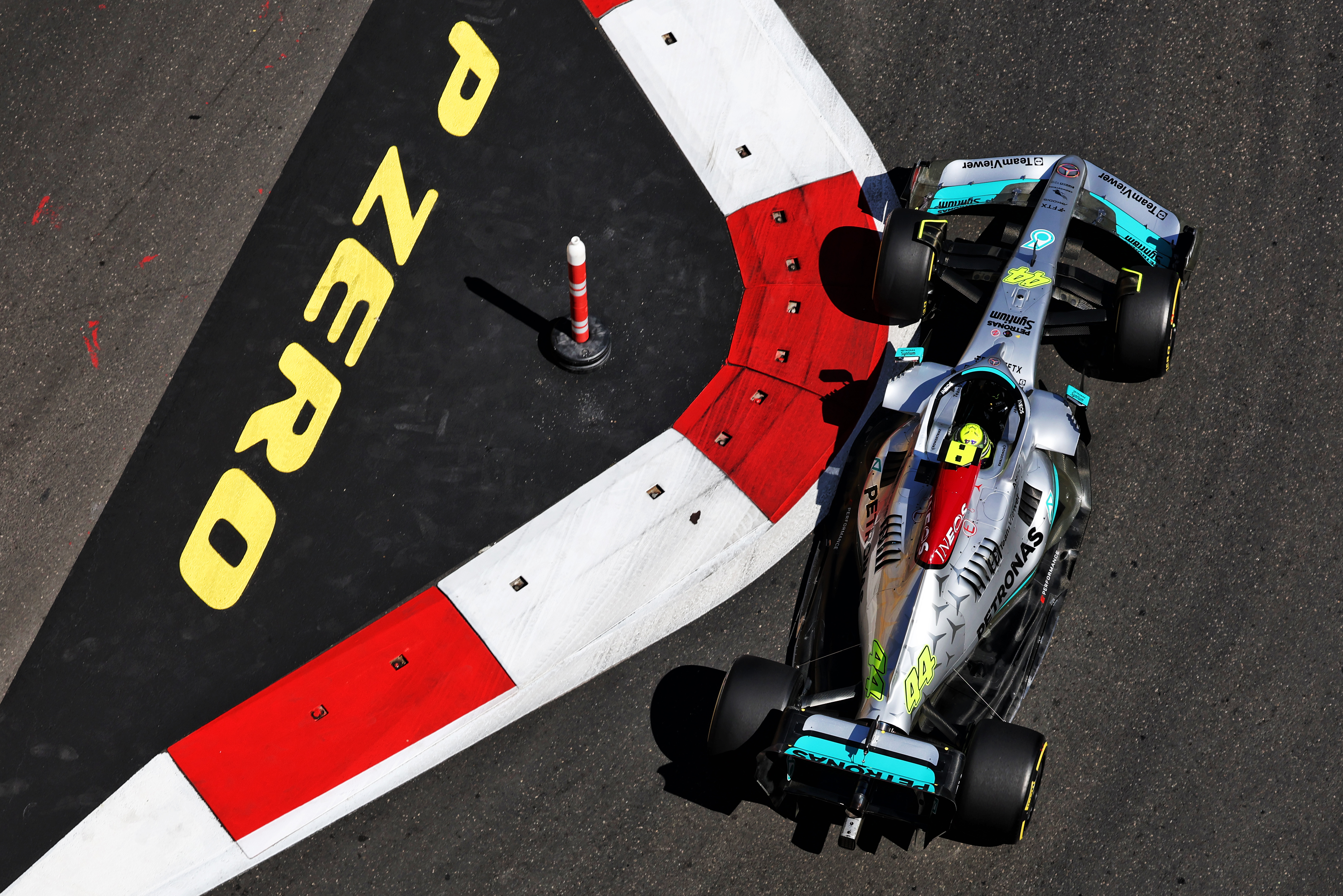
“Interestingly enough, if you go and look at previous generations of cars, the aerodynamics would have damped. So the aerodynamics actually had a net damping contribution that this year’s cars don’t. So even when you’ve cured the aerodynamic input, the fact that you’ve got less damping means that you struggle to run the cars as stiffly as you’d want to do to run them close to the ground.”
Gradually, Mercedes got its problems under control. Floor stiffness was increased, the porpoising was tamed and although bouncing still caused problems – notably in Baku – Mercedes had at least made it through the troubleshooting phase. But this came at a cost given that what might be called ‘normal’ development flatlined while it worked through the car’s many problems.
But from mid-season, Mercedes felt it had a car it could work with and performances became more consistent. So the team’s focus was on a combination of getting the best out of it and continuing to build understanding and evolve its various tools to ensure there was no repeat in 2023.
The introduction of the Aerodynamic Oscillation Metric after the August break didn’t have a big impact, as by then Mercedes was largely able to control its problems. But it also did nothing to help the team’s performance.
While some obvious gains had to be left on the table, including some weight savings, the W13 did become an increasingly potent weapon as the season progressed. There were even illusory flirtations with being able to win at the Hungaroring (where Russell bagged the team’s sole pace-based pole position) and Zandvoort, as well as later at Austin when Max Verstappen lost time to a slow pitstop. But it wasn’t until the races at Mexico City and Interlagos that Mercedes looked to have the pace to close out a win.
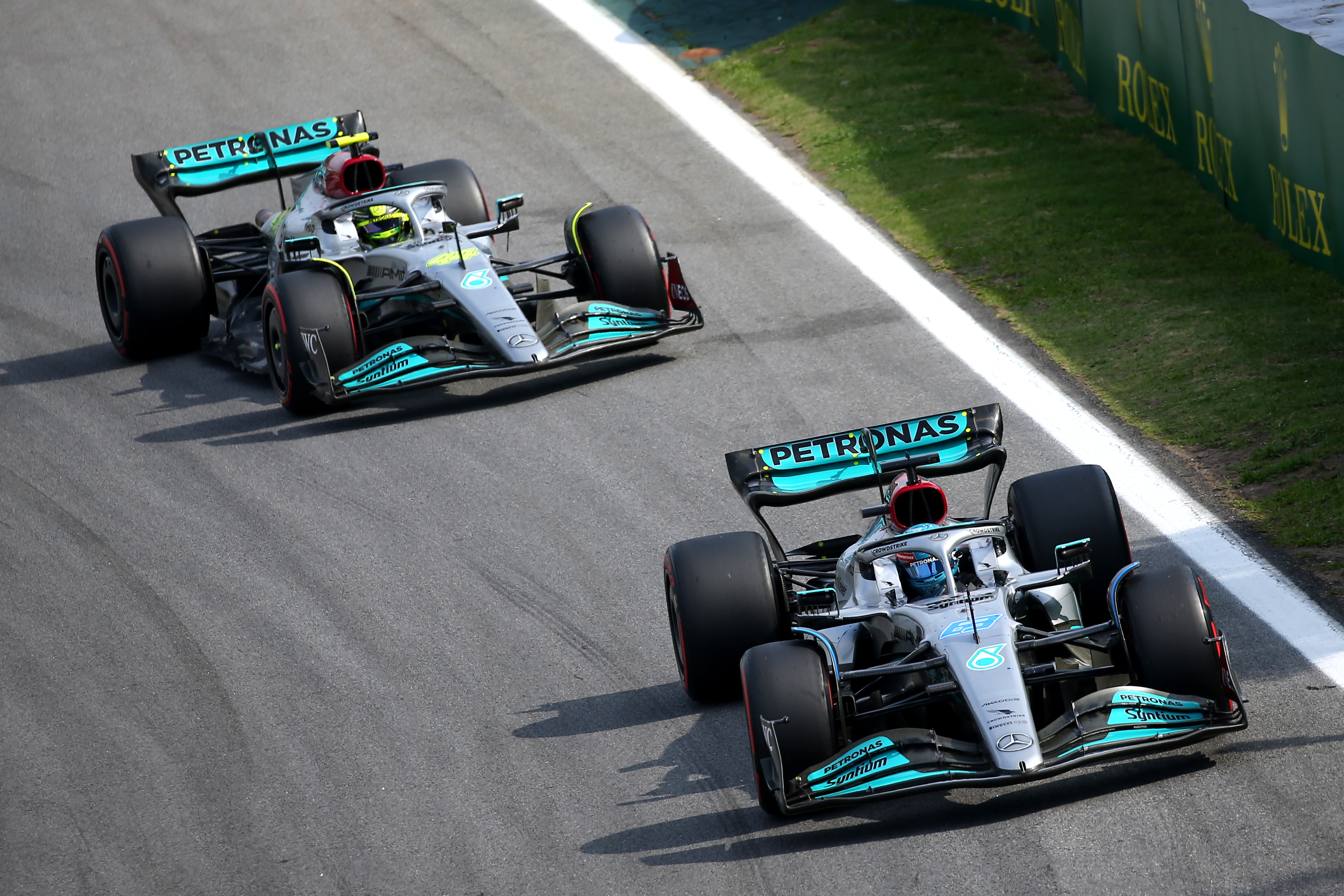
Mexico didn’t work out as hoped, although despite Mercedes’ strategic errors it’s likely Red Bull would always have had the beating of it. But Brazil a fortnight later panned out beautifully, with a 1-2 finish.
Just to ensure there were no illusions about how much work still needed to be done, bouncing problems then blighted Mercedes in Abu Dhabi. But, encouragingly, this was expected as by the second half of the year, the team generally had a good handle on how the car was going to perform before going to any given circuit – and Yas Marina didn’t look good according to predictions.
That has to be taken as a positive given it indicates the correlation was good. The key question for the in-the-works ’23 car is whether that correlation can be achieved without cross-referencing it with a real-world car to finesse it. If so, that bodes well.
Third in the constructors’ championship always looked likely, but it’s to the credit of the team that it was able to get close to challenging Ferrari for second – falling just 39 points short.
That Mercedes managed to make so much progress and turn a car that was, at times, a nightmare, is encouraging for next year. It will have emerged stronger from the experience with a vast databank of knowledge built up. But the fact there were still problems in the car even late in the year, with Lewis Hamilton highlighting its sometimes-capricious handling quirks late in the season, shows that it’s not the definitive answer to the question of whether Mercedes has understood and eliminated all of the mistakes that led it down the wrong path with its car.
The team is cautiously optimistic, and probably with good reason, about 2023. But the final test of whether the pain and strife of 2022 were really worth it will be in whether Mercedes can take the fight to Red Bull next year.


